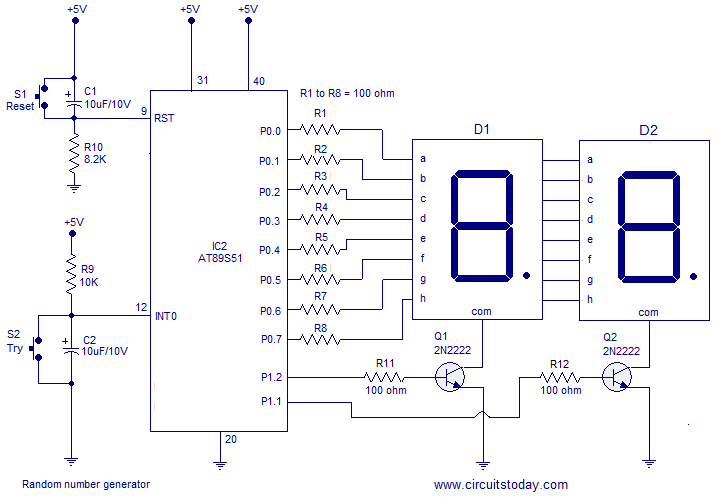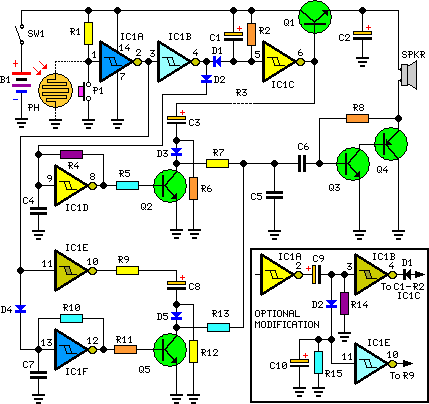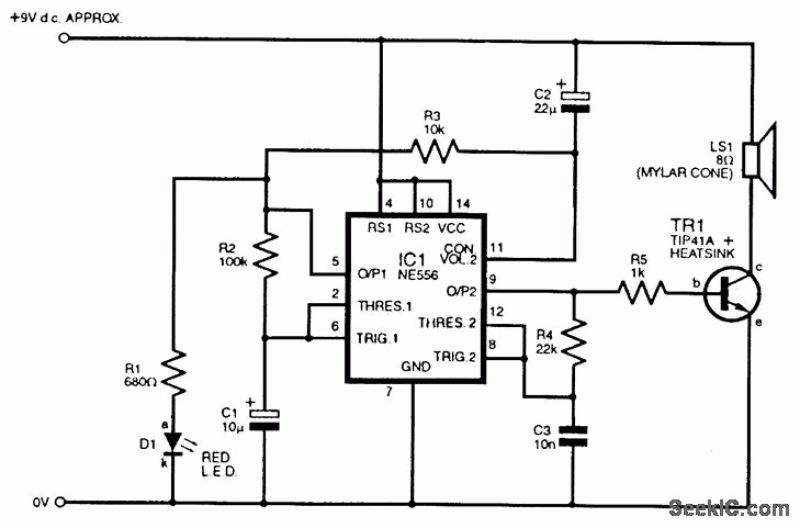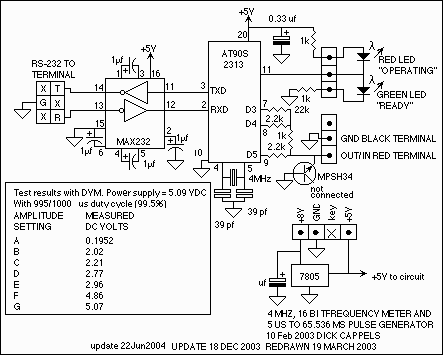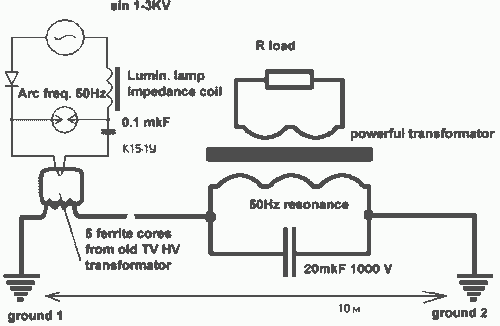
Simple Deadband Generator Targets Push-Pull Drivers

In typical push-pull driver applications, the NPN-PNP transistor pair is alternately activated and deactivated using a square-wave signal. A basic driver circuit employs an inverter between the V1 and V2 inputs to toggle the output transistors. However, mismatched turn-on and turn-off characteristics of the output transistors can lead to cross conduction during transition periods. This results in high current surges being drawn from the power supply. A simple circuit can be implemented to introduce a desired amount of deadband time between the V1 and V2 control pulses. This circuit utilizes a Schmitt-trigger inverter IC, the 74HC14. With the inclusion of diodes, different time delays can be achieved for the rising and falling edges of the drive waveform. The deadband is determined by the RC time constant. The associated waveforms are self-explanatory. This circuit allows for the use of any type of transistors in the push-pull configuration, reducing the need for matched transistors, which can be costly and effort-intensive to obtain.
In a typical push-pull driver configuration, the NPN and PNP transistors function as complementary devices to drive a load. The operation is controlled via square-wave signals applied to the bases of the transistors, enabling efficient switching. The challenge arises from the inherent differences in the turn-on and turn-off characteristics of the transistors, which can result in simultaneous conduction, known as cross conduction, during the transition phase. This phenomenon can lead to excessive current draw from the power supply, potentially damaging components and reducing overall efficiency.
To mitigate this issue, a circuit can be designed to introduce a deadband between the control signals V1 and V2. By incorporating a Schmitt-trigger inverter, such as the 74HC14, the circuit can provide hysteresis, which enhances noise immunity and provides clean transitions. The use of diodes allows for the adjustment of timing delays for both the rising and falling edges of the output waveform. The deadband duration is primarily influenced by the RC time constant, which can be tailored to suit specific application requirements.
The waveform characteristics, as depicted in the accompanying figures, illustrate the effectiveness of the deadband in preventing cross conduction. The flexibility of this circuit design permits the use of various transistor types in the push-pull arrangement, thus eliminating the need for closely matched pairs. This not only simplifies the design process but also reduces costs associated with sourcing matched transistors, making the circuit more accessible for various applications in electronics.In typical push-pull driver applications, the npn-pnp transistor pair is alternately turned on and off using a square-wave signal. A simple driver circuit uses an inverter between the V1 and V2 inputs to toggle the output transistors.
However, mismatched turn-on and turn-off characteristics of the output transistors can cause cross conduction during the transition periods ( Fig. 1 ). This results in high current surges being drawn from the power supply. The simple circuit shown in Figure 2 can be used to introduce any desired amount of deadband time between V1 and V2 control pulses. The circuit employs a Schmitt-trigger inverter IC, the 74HC14. With the diodes, different time delays can be obtained for the rising and falling edges of the drive waveform.
The deadband is determined by the RC time constant. The waveforms in Figure 3 are self-explanatory. Using this circuit, any type of transistors can be utilized for the push-pull circuit, eliminating the effort and expense required to obtain matched transistors. 🔗 External reference
In a typical push-pull driver configuration, the NPN and PNP transistors function as complementary devices to drive a load. The operation is controlled via square-wave signals applied to the bases of the transistors, enabling efficient switching. The challenge arises from the inherent differences in the turn-on and turn-off characteristics of the transistors, which can result in simultaneous conduction, known as cross conduction, during the transition phase. This phenomenon can lead to excessive current draw from the power supply, potentially damaging components and reducing overall efficiency.
To mitigate this issue, a circuit can be designed to introduce a deadband between the control signals V1 and V2. By incorporating a Schmitt-trigger inverter, such as the 74HC14, the circuit can provide hysteresis, which enhances noise immunity and provides clean transitions. The use of diodes allows for the adjustment of timing delays for both the rising and falling edges of the output waveform. The deadband duration is primarily influenced by the RC time constant, which can be tailored to suit specific application requirements.
The waveform characteristics, as depicted in the accompanying figures, illustrate the effectiveness of the deadband in preventing cross conduction. The flexibility of this circuit design permits the use of various transistor types in the push-pull arrangement, thus eliminating the need for closely matched pairs. This not only simplifies the design process but also reduces costs associated with sourcing matched transistors, making the circuit more accessible for various applications in electronics.In typical push-pull driver applications, the npn-pnp transistor pair is alternately turned on and off using a square-wave signal. A simple driver circuit uses an inverter between the V1 and V2 inputs to toggle the output transistors.
However, mismatched turn-on and turn-off characteristics of the output transistors can cause cross conduction during the transition periods ( Fig. 1 ). This results in high current surges being drawn from the power supply. The simple circuit shown in Figure 2 can be used to introduce any desired amount of deadband time between V1 and V2 control pulses. The circuit employs a Schmitt-trigger inverter IC, the 74HC14. With the diodes, different time delays can be obtained for the rising and falling edges of the drive waveform.
The deadband is determined by the RC time constant. The waveforms in Figure 3 are self-explanatory. Using this circuit, any type of transistors can be utilized for the push-pull circuit, eliminating the effort and expense required to obtain matched transistors. 🔗 External reference
